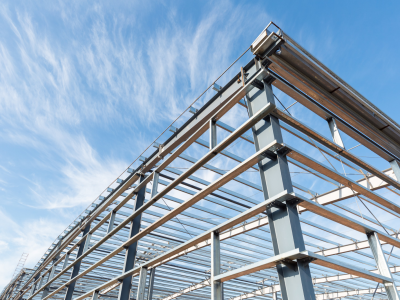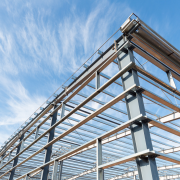The warehouse racking Singapore businesses depend upon represents an invisible architecture of commerce—a steel skeleton that not only supports goods but also shapes the lives of thousands of workers who navigate these vertical labyrinths daily. In the shadows of the city-state’s gleaming financial towers and tourist attractions, an entire ecosystem of storage and logistics unfolds, one that remains largely unseen by the general public yet proves essential to Singapore’s position as a global trade hub.
The Geography of Necessity: Vertical Solutions in a Land-Scarce Nation
Singapore’s limited land mass—just 728 square kilometres—has forced a rethinking of space that extends from residential high-rises to industrial storage solutions. Where other nations might spread warehouses across vast industrial parks, Singapore has been compelled to build upward, creating a unique vertical storage culture that maximises every precious cubic metre.
“In most countries, warehouse space is measured in square metres. In Singapore, we think in cubic metres—always calculating how to utilise the air above us,” explains a veteran logistics manager who has witnessed the transformation of the sector over three decades. “What looks like extravagant racking systems to outsiders represents survival for businesses here.”
The economics tell a compelling story:
- Industrial land costs in Singapore average S$650-850 per square metre annually—among the highest in Southeast Asia
- Modern racking systems can increase storage capacity by 300-400% compared to traditional floor storage
- Businesses report operational cost savings of 25-30% after implementing optimised vertical storage
- Return on investment for advanced racking typically occurs within 18-24 months despite high initial costs
The Human Element: Lives in the Vertical Warehouse
Behind these statistics are the warehouse workers who spend their days navigating these steel canyons. Their experiences reveal much about the human adaptation to engineered environments and the hidden costs of spatial efficiency.
Tan Mei Ling has worked in Singapore’s warehousing sector for fifteen years. At 52, she now serves as a picking supervisor, coordinating staff who retrieve items from racks that reach toward distant ceilings. “When you first enter this world, it’s overwhelming,” she says during a brief break. “The height, the narrow aisles, the constant pressure to move quickly yet safely. It takes months to feel comfortable, years to master.”
The physical realities of the work are demanding:
- Workers in high-rack environments walk an average of 15-20 kilometres per shift
- Neck strain from looking upward constantly is among the most common occupational injuries
- Temperature stratification means conditions at higher rack levels can be significantly warmer
- The psychological stress of working at heights affects worker retention and satisfaction
“It’s a physically demanding environment,” acknowledges an occupational health specialist who studies warehouse ergonomics. “But it’s also the economic reality of Singapore. These jobs provide stable employment for many who might otherwise struggle in our knowledge economy.”
The Invisible Engineering: Safety Within Constraints
What appears to the uninitiated as simple shelving represents sophisticated engineering that balances competing demands of accessibility, stability, and capacity. Modern racking must be designed for Singapore’s specific challenges:
- Seismic considerations despite Singapore’s relative geological stability
- Humidity levels that can accelerate metal fatigue without proper materials and coatings
- Weight distribution calculations that must account for varied inventory profiles
- Integration with increasingly automated picking and retrieval systems
“The engineering behind warehouse racking is comparable to building design,” notes a structural engineer who specialises in industrial installations. “We’re essentially creating steel structures that must support enormous weights while remaining accessible to workers and equipment. The margins for error are extremely small.”
The Economics of Space: How Racking Shapes Business Viability
For Singapore’s small and medium enterprises—which constitute roughly 99% of all businesses and employ 70% of the workforce—the efficiency of storage systems often determines survival in a competitive landscape. The decision to invest in quality racking represents a profound business calculation.
“For many businesses, particularly in the logistics and retail sectors, racking isn’t just infrastructure—it’s strategy,” explains an SME business advisor. “The difference between optimised and sub-optimal storage can determine whether a company survives in Singapore’s high-cost environment.”
The downstream effects are significant:
- Proper racking systems reduce picking times by an average of 40%
- Inventory accuracy improves by 25-35% with organised vertical storage
- Order fulfillment errors decrease by approximately 45%
- Worker productivity increases by 30-40% in well-designed environments
Future Adaptations: The Evolution of Warehouse Space
As Singapore continues to face land constraints, the next generation of storage solutions is already emerging:
- Fully automated retrieval systems that minimise human intervention
- Dynamic racking that adapts configuration based on inventory patterns
- Integration with robotics and artificial intelligence for picking optimisation
- Sustainable materials that reduce environmental impact while maintaining structural integrity
“The future of warehousing in Singapore will be defined by integration—systems that communicate with each other to optimise not just space but the entire supply chain,” predicts a logistics technology consultant.
Conclusion: The Unseen Foundation
Like so many essential systems, warehouse infrastructure remains largely invisible to those who benefit from its existence. The consumer ordering online rarely considers the complex journey their purchase takes through these vertical landscapes before reaching their doorstep. Yet this unseen infrastructure forms a crucial foundation upon which Singapore’s reputation for efficiency rests.
For businesses navigating Singapore’s challenging economic landscape, few decisions carry more operational significance than the design and implementation of their warehouse racking Singapore.













Comments